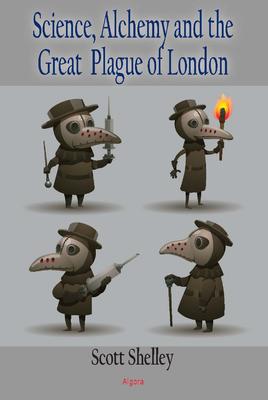
Sound Bite
George Starkey, a major contributor to the development of science and medicine, was the only physician in London who possessed a cure for the Great Plague in 1665.
This book reviews the history of chemistry, alchemy and medical science in Europe, the tensions between the rational thinkers and the Church on the eve of the Enlightenment, and the achievements of men like Starkey, Robert Boyle and Isaac Newton.
About the Author
William Scott Shelley is a highly respected scholar in the fields of botany and classical scientific literature. His previous books include The Elixir: An Alchemical Study of the Ergot Mushrooms and The Origins of the Europeans: Classical Observations in Culture and Personality, a study of tribal origins in European history and their continuing role in the shaping of Europe from earliest times to the rise of the nation-state, and Science, Alchemy and the Great Plague of London (Algora, 2017).
|
|
About the Book
Shelley reviews the development of chemistry and medicine during the Scientific Revolution, with a special focus on the contributions and influence of the "American Philosopher" George Starkey, concluding with the dramatic account of the events...
Shelley reviews the development of chemistry and medicine during the Scientific Revolution, with a special focus on the contributions and influence of the "American Philosopher" George Starkey, concluding with the dramatic account of the events leading up to Starkey's own death by the Plague. Starkey, who often wrote under the pseudonym Eirenaeus Philalethes, was a major contributor to the development of the medical sciences. The book also explores his enormous influence over his friend Robert Boyle and, later, on Isaac Newton.
Among Starkey's accomplishments was his reputation for being the only physician in London who possessed a cure for the Great Plague in 1665, though the details of his remedy are lost.
Further, examining the historical record and the medical evidence, the author presents a new theory for the cause of that dreaded epidemic. Records detailing where and how fast the disease spread, and among what populations, point to poisonous fungal infections of rye. This is the first book to present such a theory based on the primary-source medical evidence. Shelley demonstrates that all of the primary source evidence contradicts the bubonic plague theory, and he shows that all of the epidemiological evidence is consistent with poisoning by Fusarium and ergot infections of rye, a cereal that was once a staple of the poor in Europe. The argument is a medical one, based on the writings of physicians from this period, including Thomas Sydenham, considered the greatest epidemiologist of his time.
Forewords by Dr. Dan Merkur and Dr. Mary Matossian help to set the work in context.
|
|
Pages 224
Year: 2017
BISAC: SCI034000 SCIENCE / History
Soft Cover
ISBN: 978-1-62894-312-2
Price: USD 22.95
Hard Cover
ISBN: 978-1-62894-313-9
Price: USD 32.95
eBook
ISBN: 978-1-62894-314-6
Price: USD 22.95
|















